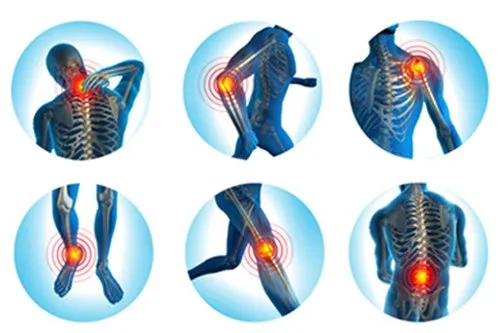The human brain produces complex electrical signals that reveal patterns of thought, behavior, and health. For decades, researchers relied on limited tools to capture and interpret these signals. Progress was slow, and insights were often restricted to surface-level observations.
With the rise of EEG software, the way scientists and clinicians analyze brain activity has changed dramatically. Advanced digital tools now process large datasets, identify subtle patterns, and deliver insights that were previously impossible to detect. This shift is transforming both research and healthcare.
What Is EEG Software?
Electroencephalography (EEG) records electrical activity in the brain through electrodes placed on the scalp. Traditionally, interpreting this data required manual effort and specialized expertise. EEG software automates much of this process by digitizing, analyzing, and visualizing brain signals in real time.
Core Capabilities
- Signal processing
Software filters noise, enhances clarity, and separates meaningful brainwave patterns from irrelevant data. This makes results more accurate and easier to interpret. - Data visualization
Graphs, heatmaps, and 3D brain models allow researchers to see brain activity dynamically. These visuals turn raw data into insights that both scientists and clinicians can act upon. - Automated analysis
Algorithms classify signals, detect abnormalities, and highlight areas of interest. This saves time and reduces the risk of human error.
Why Software Is Transforming EEG Research
EEG once relied heavily on manual observation, which limited scalability. Today, advanced platforms process massive datasets in minutes. This unlocks new possibilities for neuroscience and healthcare.
Faster and More Accurate Insights
Automation reduces the time needed to interpret results. Researchers can test more hypotheses and explore patterns that would take weeks to identify manually.
Accessibility for Clinicians
Software lowers the barrier for clinical use. Doctors without deep neuroscience backgrounds can now access reliable interpretations, enabling wider application of EEG in hospitals and clinics.
Support for Big Data Research
Large-scale studies involving thousands of participants are now possible. Software manages and compares data at a scale far beyond human capacity, opening doors for population-level insights.
Applications in Healthcare
EEG software has moved beyond laboratories and is now shaping modern medical practice.
Diagnosing Neurological Disorders
Conditions such as epilepsy, Alzheimer’s, and sleep disorders can be better understood through EEG analysis. Automated detection of abnormal brain patterns speeds up diagnosis and supports early intervention.
Monitoring Mental Health
Subtle changes in brain signals can indicate stress, anxiety, or depression. Clinicians use EEG tools to track these states and measure the impact of therapies.
Brain-Computer Interfaces
EEG-driven interfaces allow patients with mobility impairments to control devices with their thoughts. Software translates brain signals into commands, creating new avenues for independence.
Applications in Research and Innovation
Outside clinical practice, EEG software is driving innovation in cognitive science, education, and technology.
Cognitive Studies
Researchers use EEG to explore learning, memory, and attention. Software tools reveal how the brain responds to stimuli and adapts to tasks, improving our understanding of cognition.
Education and Training
Real-time EEG feedback helps design educational strategies. By measuring attention and focus, educators can tailor lessons to student needs.
Human-Technology Interaction
EEG systems are being integrated into virtual reality and gaming, where brain activity guides immersive experiences. This crossover between neuroscience and technology is rapidly expanding.
Challenges in EEG Software Development
Despite progress, EEG software still faces hurdles that researchers are working to overcome.
Signal Complexity
Brain signals are extremely complex and often mixed with noise from muscle activity or external interference. Even advanced software must carefully filter these signals without losing important data.
Standardization
Different research groups and hospitals may use varying systems and algorithms, making it difficult to compare results. Establishing standards is essential for consistent outcomes.
Ethical Concerns
As brain data becomes more detailed, privacy becomes a major issue. Safeguarding sensitive information is critical as EEG applications grow.
The Role of Artificial Intelligence
Artificial intelligence is central to modern EEG software. Machine learning algorithms detect patterns that humans cannot see, enabling breakthroughs across multiple domains.
Key Contributions of AI
- Pattern recognition
AI identifies unique signatures in brainwaves linked to specific diseases or cognitive states. - Predictive modeling
Algorithms forecast how a patient’s condition may evolve, supporting proactive treatment. - Adaptive learning
AI systems improve as they process more data, constantly refining accuracy.
Integration With Other Technologies
AI-powered EEG tools often integrate with imaging systems and wearable devices. This creates a more comprehensive picture of brain activity, merging multiple data sources into one analysis.
Future Directions for EEG Software
The next generation of EEG platforms promises even greater precision, usability, and applications.
Personalized Healthcare
Software may soon tailor treatments based on individual brain signatures. This personalized approach ensures that therapies are more effective for each patient.
Expanded Consumer Use
Wearable EEG devices are already available for wellness and focus training. As software becomes more user-friendly, everyday consumers may track their brain health like they do heart rate or steps.
Cross-Disciplinary Impact
Beyond healthcare, EEG insights could influence marketing, education, and workplace productivity. Measuring cognitive states in real time has endless potential applications.
Conclusion
EEG software has redefined how brain signals are captured, analyzed, and applied. By automating analysis, enhancing accuracy, and expanding access, it has transformed neuroscience research and clinical practice. What once required specialized expertise is now accessible to doctors, researchers, and even consumers.
As the field advances, AI EEG innovations will further accelerate progress, making brain-signal interpretation faster, smarter, and more reliable. With the combination of human expertise and intelligent tools, understanding the brain is no longer limited to the lab but is becoming an integral part of healthcare and technology worldwide.




